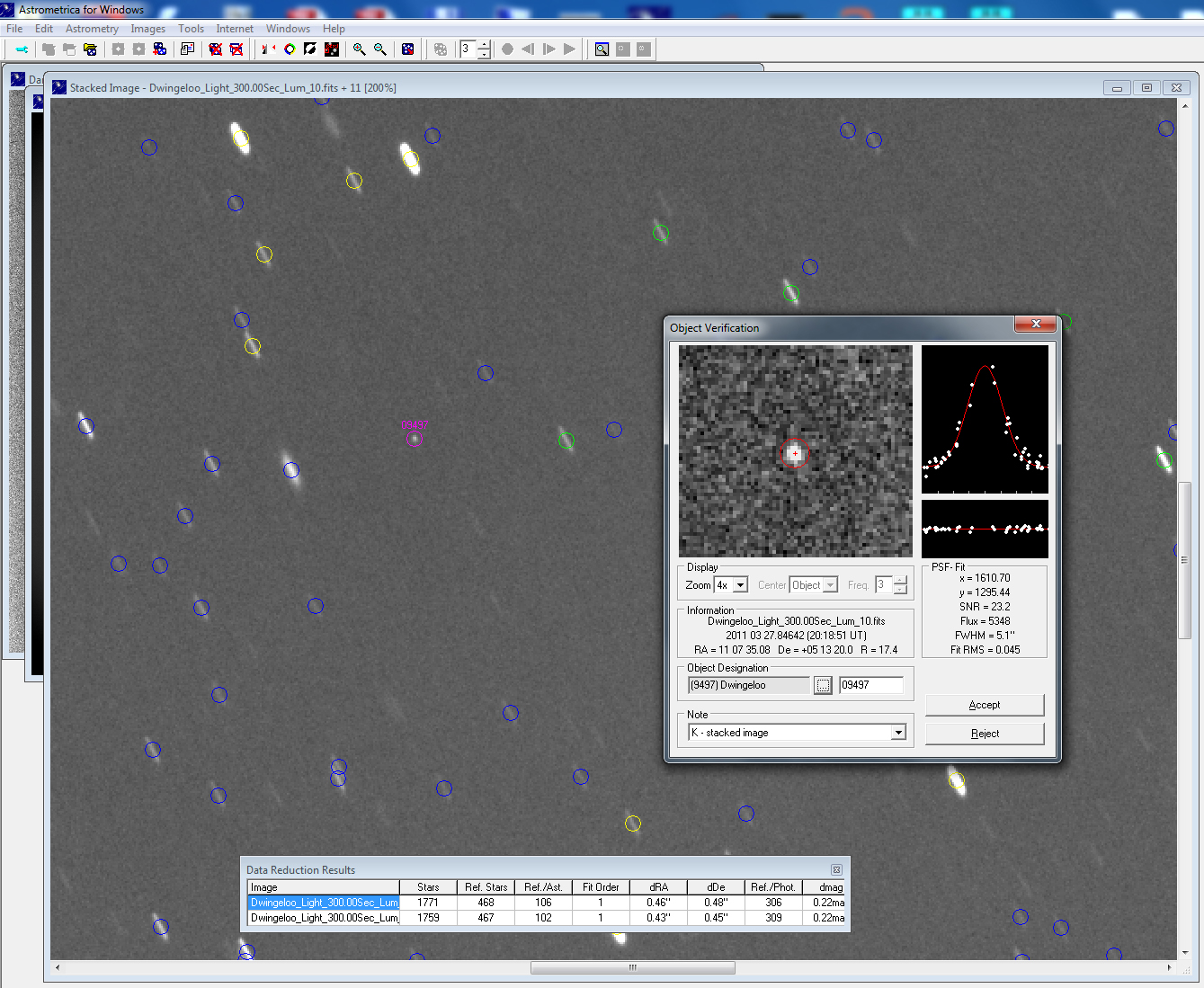Daily Image
19-04-2011Asteroid 9497 "Dwingeloo"
| Submitter: | Albert van Duin |
| Description: | The constellation of Leo is riding high in the sky well before midnight this time of year. The perfect time to hunt for asteroid 9497 "Dwingeloo", nearly at it's brightest near opposition, and residing in that area at the moment. The asteroid was discovered on September 29, 1973 by C.J. van Houten, I. van Houten-Groeneveld and T. Gehrels at Mount Palomar using the 1.2m Oshin Schmidt-telescope. It's actual distance is 1.966 AU, it's size is about 14.4 km and the visual magnitude is around 17 at the moment. Since there is a fair amount of light pollution in the south at Beilen Observatory, the signal to noise ratio would not be very high. The apparent speed of the asteroid is 26 arcseconds/hour compared to the field stars, so I decided to make a series of 12 exposures, each 5 minutes long. Afterwards these images were stacked in the "Astrometrica" software. Using this program, one can measure the exact position of moving objects. The exact exposure time and date are stored in the fits header of each file by the image acquisition software. This timestamp should be accurate within 1 second for fast moving objects. Even with a relatively small 20cm telescope, one can measure astrometric positions with an accuracy better than 1 arcsecond. By passing an "examination" in 2008, Beilen Observatory earned an Observatory code (B85) issued by the MPC (Minor Planet Centre). The 12 images of 9497 "Dwingeloo" were stacked automatically in Astrometrica to improve the signal to noise ratio of the moving asteroid. In the image you can see "Dwingeloo" (in the purple ring at left) passing by magnitude 16.2 galaxy PGC33692 (the fuzzy cigar just left of the asteroid). All objects in the image appear stretched due to the 26 arcsecond movement of the asteroid during the one hour exposure. Used reference stars are in a green circle, the blue circles contain detected stars or objects that were not used as a reference. A zoomed-in view is in the small window to the right of the asteroid. In the bottom window you can see the residuals, in this case the measured positions of the reference stars in the images were less than half an arcsecond "off" compared to the UCAC3 star catalog that was used for these measurements. Next target will be asteroid "Westerbork", but unfortunately it's only magnitude 21.5 currently, well beyond the reach of my equipment. |
| Copyright: | Albert van Duin |
| Tweet |  |
